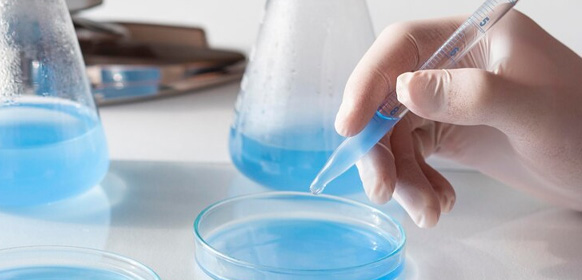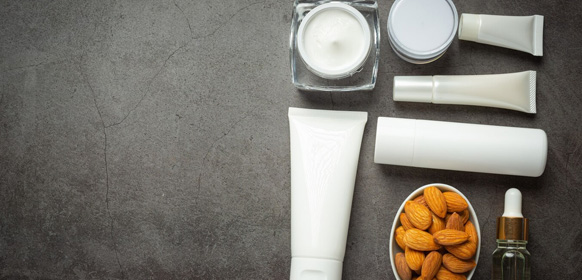
Knowing the ingredients in your makeup is not just for the chemically curious; it’s essential for anyone who values their skin and overall health.
Understanding makeup ingredients can help you make better choices for your skin type, tackle skin issues, and keep you informed about any potential allergens.
Usually it contents as below:
Water
- Solvent: Helps to mix oil and water-based ingredients for easier application of products.
- Texture: Gives products a smoother consistency.
- Hydration: Adds moisture to products, although the hydrating effects are usually minimal.
- Carrier: It carries active ingredients into the skin for better efficacy.
Pigments
- Inorganic Pigments: Generally they are mineral-based and considered to be more stable to ensure the color of the product.
- Organic Pigments: Organic pigments are often derived from plant and animal sources but can also be synthesized in a lab. It is natural and helpful.
Fragrances
Their main job is to add scent, but they can also have psychological effects, such as boosting mood or creating a sense of luxury. The purpose of using them may be: Masking Odor, Enhanced Experience, Mood Elevation, Product Preservation.
Thickeners
These agents help maintain the texture and viscosity of a product, making it easier to apply, more durable, and long-lasting on the skin.
- Stability: Thickeners help to stabilize formulas, ensuring that they don’t separate over time.
- Ease of Application: A thicker consistency can make the product easier to apply accurately.
- Longevity: Thicker products generally have a longer staying power on the skin.
- Enhanced Feel: They improve the tactile experience, making products feel luxurious.
- Better Dispersion: Thickeners help distribute other ingredients more evenly within the formula.
Emulsifiers
Emulsifiers can be natural, like lecithin, or synthetic. They work by reducing the surface tension between the oil and water components, allowing them to blend seamlessly into a stable mixture.
- Stable Formulas: They prevent the separation of water and oil-based ingredients, making your makeup last longer.
- Uniform Texture: Emulsifiers ensure a smooth and consistent texture.
- Improved Absorption: They can make a product easier to absorb into the skin.
- Versatility: Enables the combination of ingredients with different properties, resulting in multifunctional products.
- Enhanced Shelf Life: Stability means longer shelf life (the open jar symbol on the back of a cosmetic product).
Preservatives
Preservatives can be natural, like rosemary extract, or synthetic like parabens. Their primary function is to prevent the growth of bacteria, mold, and yeast in cosmetics.
- Safety First: Without preservatives, harmful microbes could thrive in your makeup, leading to skin problems.
- Longevity: They help your products last longer, saving you the hassle of frequent replacements.
Emollients
Emollients soften, soothe, and make everything feel better on your skin. They make you product not only look better but also feel better.
- Skin Softening: Emollients are the go-to for making your skin feel as soft as a baby’s.
- Barrier Function: They form a protective layer on the skin, keeping moisture locked in.
- Smooth Application: Make your cosmetics glide effortlessly during application.
After Knowing the ingredients, we can start creat the formula step by step, Here’s a detailed walk-through of this process:
Step 1: Project Briefing and Defining Important Key Metrics
First and foremost, assembling a detailed project brief is vital.
Think of this as a blueprint for your vision.
Write down your desired texture, color, moisturizing capacity, and any other essential attributes.
Be crystal clear about your expectations for this product. Don’t leave anything to interpretation. And don’t forget to communicate to the manufacturer about your pricing objective (target price) for the product.
Step 2: Drawing Inspiration from Successful Products
Having an existing product as a blueprint often provides a good starting point for new formulations. It acts as a rough benchmark, or you reengineer it 1to1. Either way, you can then change it according to your liking.
As per a report by Cosmetics Business, these successful products’ influence leads to consistent quality and innovative breakthroughs in new developments.
Step 3: Conception of Formulation
Once the preliminary steps pave the way, formulators take over. They meticulously select and blend various ingredients like emollients, thickeners, preservatives, fragrances, and colors.
The goal is to precisely meet the project briefing’s outlined targets while maintaining quality and safety standards.
Step 4: Creating the first Sample
Now that the formulation of your chosen cosmetic product has been conceived, the exciting stage of actually creating that first sample begins.
This process is where the concept becomes a tangible reality.
Keep in mind, perfect cosmetic products, like Rome, aren’t built in a day.
The primary blend a manufacturer makes, influenced by popular products of a similar kind, isn’t the final product.
It’s merely the starting point for your product.
Step 5: Sample Revision and Perfection
There is typically only a limited number of free revisions set by the cosmetic manufacturer, so you have to make them count.
Use your senses — how does it feel when applied? Is the scent pleasing? How does it sit on the skin after some time?
Take detailed notes as you evaluate each characteristic.
As a formulator, it’s their responsibility to assure every aspect aligns with what the consumer wants.
Once you’ve identified areas requiring improvement, communicate these with your manufacturer.
Be articulate and precise — use specific language and give clear directives.
Remember, vague feedback gets vague revisions, and that’s not something we can afford with a limited number of opportunities to get it right.
Following this process, your manufacturer will revise the sample to meet your updated guidelines.
And then repeats the cycle — revise, perfect, and repeat.
Step 6: Choose a Packaging
Packaging, a critical yet often overlooked aspect of cosmetics, can greatly affect a product’s success.
Many manufacturers opt for pre-existing packaging options for cost and convenience, with a wide variety of bottles, jars or tubes available.
The selection should align with a product’s size, price point and the compatibility of packaging materials with the cosmetic formulation.
Your packaging is the first point of contact with your customers, so let it make a good impression and mirror your brand image.
Step 7: Compatibility- and Stability Testing
Now, we’re ready to dive into the final integral phase of cosmetic formulation: ensuring the product’s stability and compatibility.
During the compatibility test, the product is exposed to varying conditions, such as different levels of light, temperature fluctuations, and changes in moisture, to scrutinize how well the ingredients play together.
Signs of potential issues could include separation of components, alterations in the hue, or an unexpected change in texture.
Stability testing is the checkpoint that guarantees the product’s quality longevity.
Here, the core aim is to assure us that our cosmetic product maintains its essential physical, chemical, and microbial characteristics intact throughout its lifespan, regardless of storage conditions or how it’s used. This involves examining parameters like pH level, viscosity, scent, color, and the efficiency of the preservatives within the mix.






















